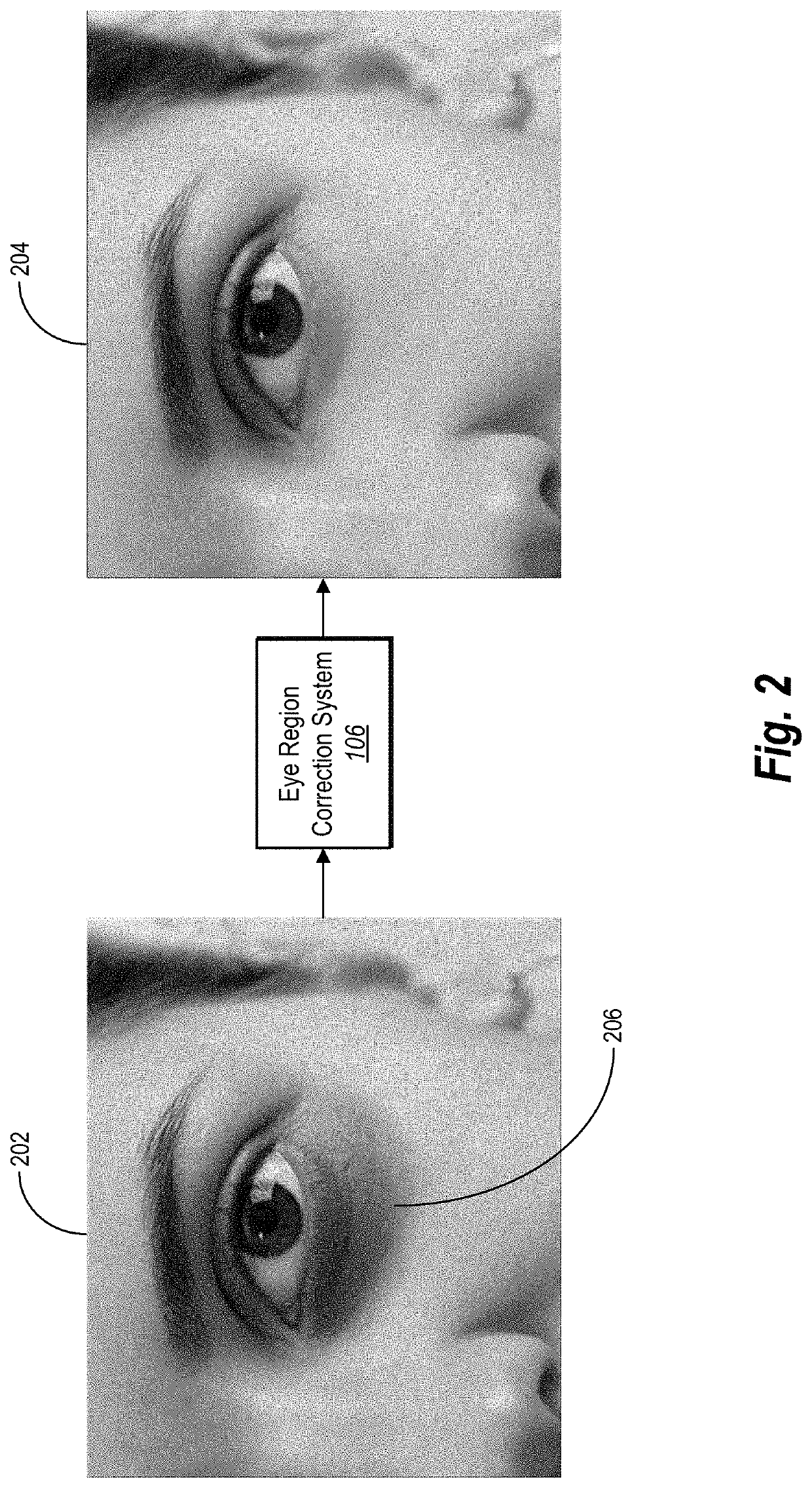Automatically correcting eye region artifacts in digital images portraying faces
a digital image and automatic correction technology, applied in image enhancement, image analysis, instruments, etc., can solve the problems of inaccurate retouching of digital images, inaccurate digital artificial, and inaccuracy, and many conventional systems produce inaccurate retouched images that appear unnatural or contain visual artifacts
- Summary
- Abstract
- Description
- Claims
- Application Information
AI Technical Summary
Benefits of technology
Problems solved by technology
Method used
Image
Examples
Embodiment Construction
[0025]One or more embodiments of the present disclosure includes an eye region correction system that automatically, accurately, and efficiently identifies, localizes, and corrects eye region artifacts in digital images portraying human faces. In particular, in one or more embodiments the eye region correction system identifies and corrects dark eye circles and / or eye bags and wrinkles from sub-eye regions of faces portrayed within digital images. For example, the eye region correction system utilizes a facial landmark detection algorithm to identify a sub-eye region and sampling correction area within a face portrayed within a digital image. The eye region correction system then determines a dark eye region and wrinkles portrayed within the sub-eye region by applying a color matching algorithm relative to the sampling correction area and an edge detection algorithm. The eye region correction system further corrects the various eye region artifacts. For instance, the eye region corr...
PUM
 Login to View More
Login to View More Abstract
Description
Claims
Application Information
 Login to View More
Login to View More - R&D
- Intellectual Property
- Life Sciences
- Materials
- Tech Scout
- Unparalleled Data Quality
- Higher Quality Content
- 60% Fewer Hallucinations
Browse by: Latest US Patents, China's latest patents, Technical Efficacy Thesaurus, Application Domain, Technology Topic, Popular Technical Reports.
© 2025 PatSnap. All rights reserved.Legal|Privacy policy|Modern Slavery Act Transparency Statement|Sitemap|About US| Contact US: help@patsnap.com



